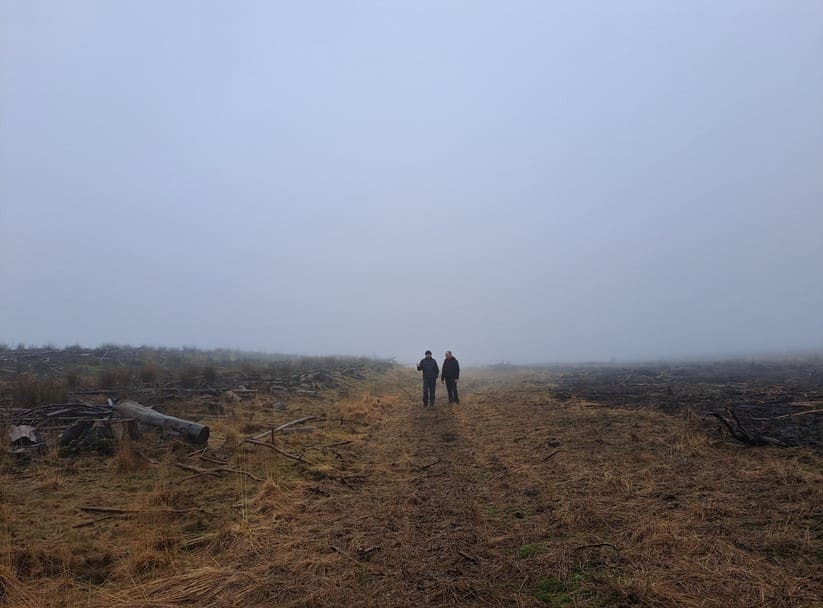A large area of peatland, equivalent in size to 70 rugby pitches, has been successfully restored in Glyncorrwg, Neath Port Talbot. The Lost Peatlands of South Wales, a partnership project funded by the Heritage Lottery Fund, has been working to restore the 50-hectare site since February 2023.
Peatlands, also known as bogs or mires, play a crucial role in environmental protection and combating climate change. In good condition, peatlands can act as giant sponges, absorbing and storing large amounts of carbon dioxide from the atmosphere. They also provide a home to endangered plants and animals, help prevent flooding downstream by retaining water, and can help reduce the spread of mountain wildfires.
There are many ways to restore a peatland, with most techniques involving the blocking of drainage channels or areas of surface run-off. This is done by creating dams using peat or through the use of timber. There is then a need to smooth the area left after forested sites are clear-felled, where the remaining stumps are flipped upside down and pushed back into the peat.
The need to restore the 50-hectare site was due to how it has been degraded and drained in the past for commercial forestry, fuel, and agricultural purposes. Much of this took place immediately after World War Two when there was a need for extra timber production. This led to the peatlands being ploughed and drained, leaving habitats exposed and reducing water levels.
Councillor Jeremy Hurley, Neath Port Talbot Council’s Cabinet Member for Climate Change & Economic Growth, said: “Preventing further damage and restoring healthy ecosystems such as Peatlands is an example of how our council’s DARE strategy (Decarbonisation and Renewable Energy Strategy) is helping to tackle climate change head-on. Through restoring these ecosystems, we are not only supporting nature’s resilience against the impacts of global warming but also creating thriving habitats and natural flood defences.”
Whilst the majority of the site is in Neath Port Talbot, it is accompanied by similar peatland areas throughout the uplands above the Afan and Rhondda Valleys, where the Lost Peatland project takes action on environmental issues as well as community outreach within local villages.
This work is funded through the National Lottery Heritage Fund and delivered in partnership between Neath Port Talbot and Rhondda Cynon Taf Councils, Natural Resources Wales, Swansea University, and Coed Lleol.
In addition to its restoration work, the project also seeks to improve signage and promote the peatlands to make them more accessible and encourage people to explore the areas. The project also holds regular educational activities and events to encourage people to find out more about the project and the area’s wealth of heritage.









Leave a Reply
View Comments